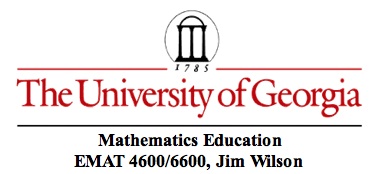

Now, x corresponds to the longest side of the triangle and intuitively we can see that it must be fairly close to s. That is, x is relatively small. In fact, x, the smallest of x, y, or z, can only be 1, 2, or 3. Now consider each case.
When x = 1,
and thus integer values of (x, y, z) are (1, 5, 24), (1, 6, 14) or (1, 8, 9). These are the only possible triples because the product pairs for 20 are (1, 20), (2, 10), (4, 5).
When x = 2, a similar process leads to (x, y, z) as (2, 3, 10) or (2, 4, 6).
Again, these are the only triples because the only product pairs for 8 are (1, 8), and (2, 4).
When x = 3,
The product pairs for 52 are ( 1, 52), (2, 26), and (4, 13). The first and third do not lead to integer values for y and z. The second does not preserve the order for x and y (or it duplicates a previous case).
Therefore there are exactly 5 triangles with integer sides and integer area having numerically equal perimeter and area. They are:
Of these triangles, the last two are right triangles. Why? The square of the first side length is the sum of the squares of the other two side lengths. The other three are obtuse because the sum of the square of the longest side is greater that the sum of the squares of the lengths of the other two sides.
Click HERE to see GSP demonstrations of scale models of these 5 triangles and the relationships among them.
Reference:
Starke, E. P. (1969) An old triangle problem. Mathematics Magazine, Jan-Feb, p.47.